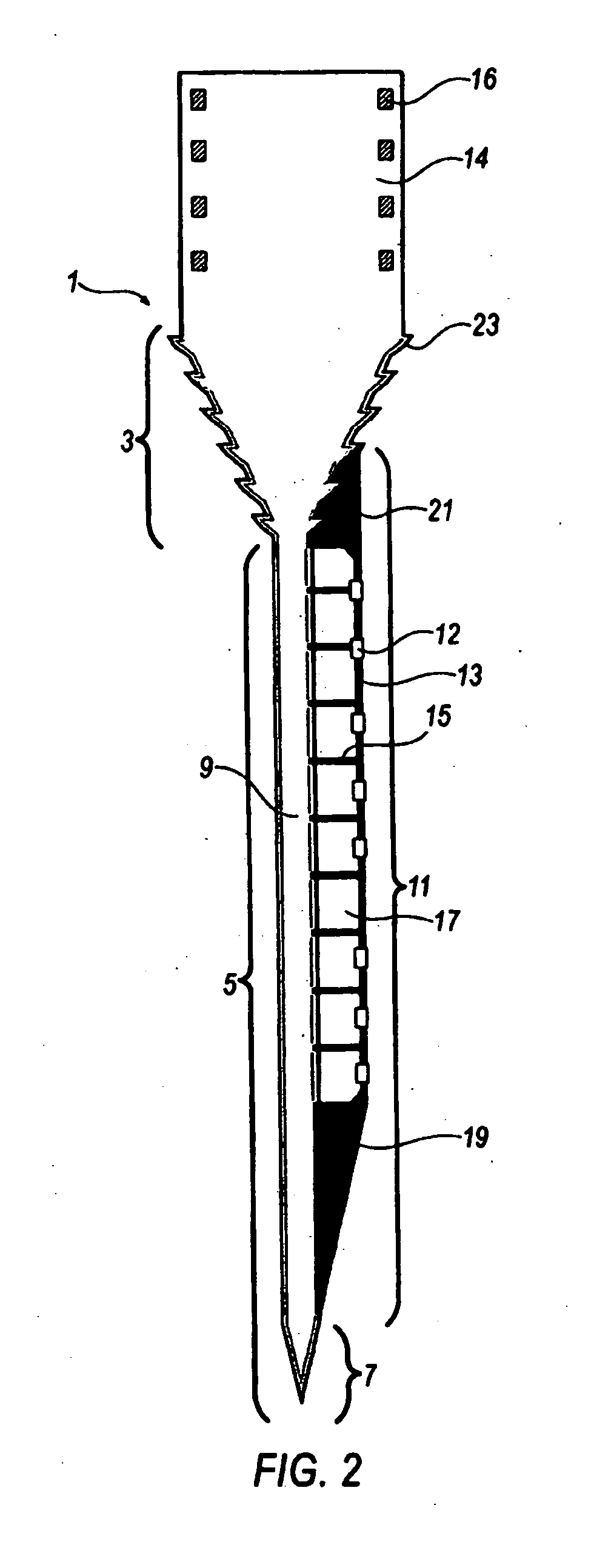Microelectrode with laterally extending platform for reduction of tissue encapsulation
a microelectrode and platform technology, applied in the field of implantable microelectrodes, can solve the problems of tissue encapsulation failure, loss of performance, and high reliability and efficacy standards of intracortical neural probes, and achieve the effects of reducing the number of implantable microelectrodes
- Summary
- Abstract
- Description
- Claims
- Application Information
AI Technical Summary
Benefits of technology
Problems solved by technology
Method used
Image
Examples
example
[0048]The following example of some embodiments of the invention is provided without limiting the invention to only those embodiments described herein.
[0049]We conducted a study to determine whether tissue encapsulation at the device-tissue interface could be modulated based on probe geometry. Neural probes were developed and tested that had conventional penetrating shanks combined with several types of narrow and wide lattice elements, Encapsulation and neuronal loss were correlated with the different device geometries by employing high resolution confocal images to determine neuronal and nonneuronal cell densities, Double labeling with a variety of immunostains around the intact neural probe provided additional qualitative analysis of the device-tissue microenvironment, including neurons, astrocytes, microglia and several extracellular matrix proteins.
[0050]Materials and Methods
[0051]Neural Probe Design and Fabrication
[0052]A scanning electro microscope (“SEM”) image and CAD layou...
PUM
 Login to View More
Login to View More Abstract
Description
Claims
Application Information
 Login to View More
Login to View More - R&D
- Intellectual Property
- Life Sciences
- Materials
- Tech Scout
- Unparalleled Data Quality
- Higher Quality Content
- 60% Fewer Hallucinations
Browse by: Latest US Patents, China's latest patents, Technical Efficacy Thesaurus, Application Domain, Technology Topic, Popular Technical Reports.
© 2025 PatSnap. All rights reserved.Legal|Privacy policy|Modern Slavery Act Transparency Statement|Sitemap|About US| Contact US: help@patsnap.com



